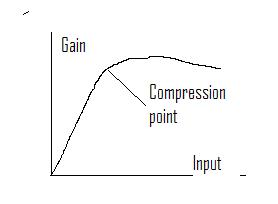flyback2
Junior Member level 1
strong antenna
I have a quite strange problem:
I am developing a ASK receiver at 433MHz, modulated by a digital stream at 4K baud. When the transmitter and receiver are quite near (about 40cm) , the receiver RF front end will saturated (I think so), and the demodulated output stops working. With a distance of 35cm, the output reappear but is in exactly in reversed polarity. How can I explain this behaviour?
Regards
I have a quite strange problem:
I am developing a ASK receiver at 433MHz, modulated by a digital stream at 4K baud. When the transmitter and receiver are quite near (about 40cm) , the receiver RF front end will saturated (I think so), and the demodulated output stops working. With a distance of 35cm, the output reappear but is in exactly in reversed polarity. How can I explain this behaviour?
Regards
